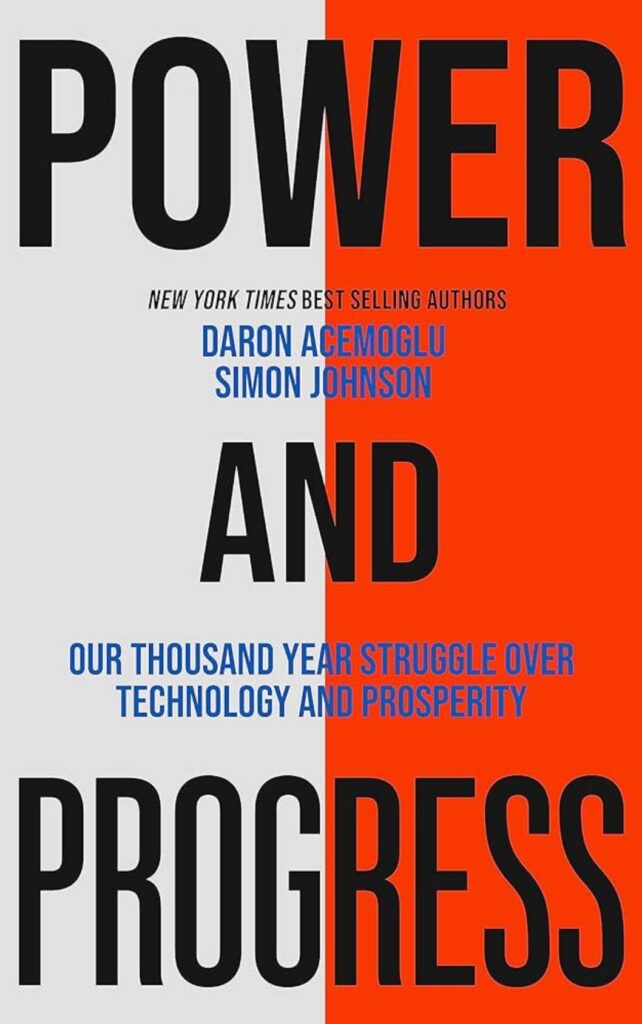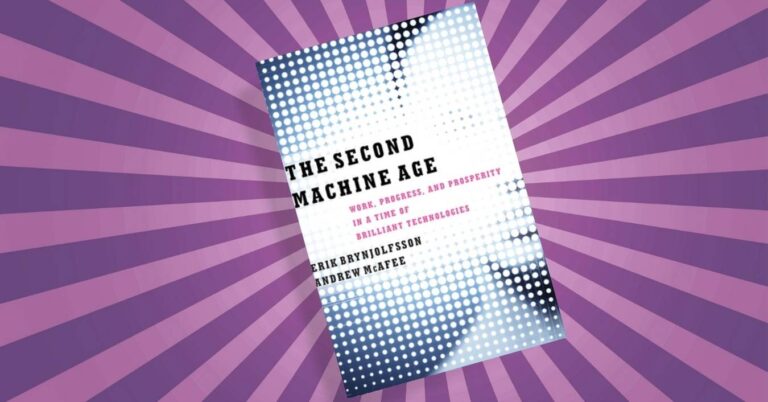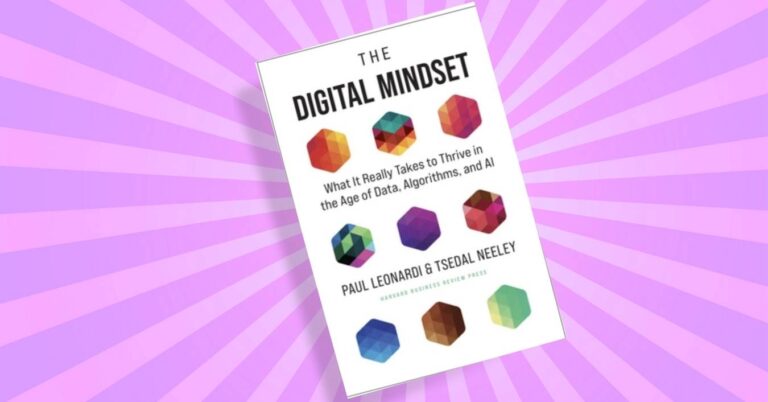
“Power and Progress” explores the relationship between technological innovation, economic growth, and social inequality.
The authors, Daron Acemoglu and Simon Johnson argue that while technological progress has the potential to drive economic growth and improve living standards, it often leads to increased inequality and concentration of power unless carefully managed through policy and institutional frameworks.
Key Takeaways, Insights, and Views
- Technological Innovation and Economic Growth
- Technological advancements drive economic growth by increasing productivity and creating new markets.
- Historical examples show both positive and negative impacts of technology on labor markets and income distribution.
- Inequality and Power Concentration
- Technology can lead to greater inequality by disproportionately benefiting those who control and own the new technologies.
- Power becomes concentrated among a few, exacerbating social and economic divides.
- Role of Institutions and Policies
- Effective policies and strong institutions are crucial to ensuring that the benefits of technological progress are widely shared.
- Regulatory frameworks, education, and social safety nets play a key role in mitigating the negative impacts of technological change.
- Historical Perspectives
- Analysis of past technological revolutions (e.g., Industrial Revolution, Information Age) to understand the patterns and consequences of technological change.
- Lessons learned from history to guide future policy decisions.
- Future of Work and Society
- Speculation on future technological developments and their potential impacts on jobs and society.
- Emphasis on the need for proactive measures to prepare for and manage these changes.
Core Concepts
| Concept | Explanation | Importance |
|---|---|---|
| Technological Innovation | Development of new technologies that enhance productivity. | Drives economic growth and can improve living standards. |
| Economic Inequality | Disparities in income and wealth distribution among populations. | Can lead to social unrest and hinder sustainable economic growth. |
| Power Concentration | Accumulation of economic and political power in the hands of a few. | Can undermine democratic processes and exacerbate inequality. |
| Institutional Frameworks | Structures and policies that govern economic and social interactions. | Essential for managing the distributional impacts of technology. |
| Historical Technological Revolutions | Key periods of rapid technological change in history. | Provide insights and lessons for managing current and future changes. |
Deeper Explanations of Important Topics
- Technological Innovation and Economic Growth
- Technological progress increases productivity by allowing for more efficient production processes and the creation of new industries. Historical examples include the steam engine, electricity, and the internet. Each of these innovations spurred economic growth but also required adaptations in the labor market and policy responses to manage their impacts on inequality.
- Inequality and Power Concentration
- As technology evolves, those who control and own the technologies often see significant gains, while workers and those without access to capital may experience job displacement and wage stagnation. This dynamic can lead to a concentration of wealth and power, creating barriers to economic mobility and social equity.
- Role of Institutions and Policies
- Institutions such as governments, educational systems, and regulatory bodies play a critical role in shaping the outcomes of technological change. Policies that promote education, provide social safety nets, and regulate market practices can help ensure that the benefits of technology are more broadly shared.
Actionable Insights
- Promote Inclusive Education and Training
- Investing in education and continuous training programs to equip workers with the skills needed to adapt to technological changes can help mitigate job displacement and wage stagnation.
- Strengthen Social Safety Nets
- Implementing robust social safety nets, including unemployment insurance and healthcare, can protect those adversely affected by technological shifts.
- Foster Competitive Markets
- Enforcing antitrust laws and promoting competitive markets can prevent the excessive concentration of economic power and ensure more equitable distribution of the benefits of technological progress.
Quotes from "Power and Progress"
- “Technological progress is neither inherently good nor bad; its impacts depend on how society manages and distributes its benefits.”
- “The concentration of economic power in the hands of a few can undermine the very foundations of democracy.”
- “Education and continuous learning are the keys to ensuring that workers can thrive in an ever-changing technological landscape.”
- “Effective institutions are crucial in turning technological potential into widespread prosperity.”
- “History teaches us that the benefits of technological change are not automatic; they require deliberate and thoughtful policy interventions.”
This summary of “Power and Progress” by Hilke Schellmann is part of our series of comprehensive summaries of the most important books in the field of AI. Our series aims to provide readers with key insights, actionable takeaways, and a deeper understanding of the transformative potential of AI.
To explore more summaries of influential AI books, visit this link.






